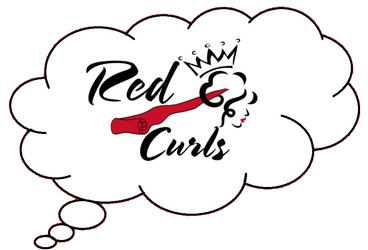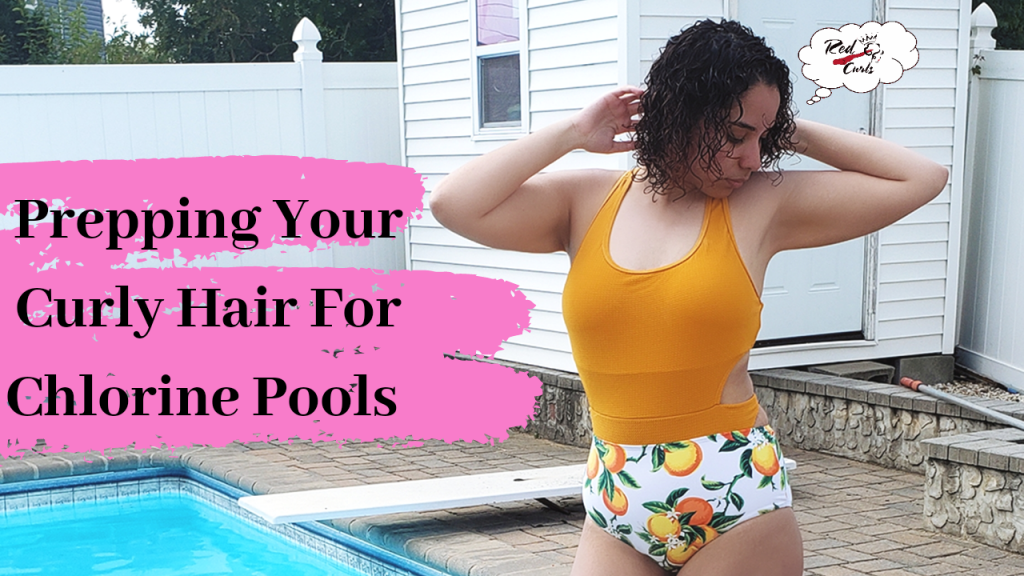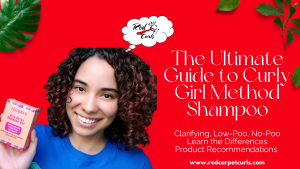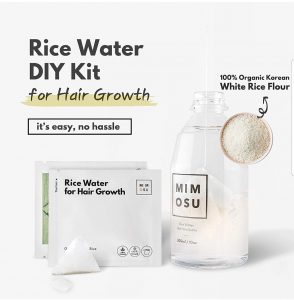Why Should You “Prep” Your Hair For Chlorine Pools?
Chlorine is a disinfectant, it’s added to pools to eradicate and prevent the growth of fungus and bacteria. It’s an incredibly harsh ingredient when the hair and skin are exposed to it.
According to Hairpros.edu, “Chlorine sucks the natural oil from your hair and skin, leaving them dry, rough, and damaged. Chlorine can cause chemical reactions in your hair, changing the natural color of your hair, weakening each hair strand, and causing split ends.”
Let’s not forget the hot summer sun also causes damage to the hair. Combine the damage from the sun and water and you have a serious frizzy mess on your hands.
Prepping your hair from the pool prevents the hair from absorbing the damaging chlorine water which would steal any progress you have made this year with the Curly Girl Method, especially if it’s early in your journey and you expose your hair often to chlorine.
So How Do You Protect Your Curls?
Prepping your hair for the pool is not a super tedious task.
It can be as simple as wetting your hair with water and conditioner before leaving your home or diving into the pool!
Prepping your naturally textured hair for the pool is all about sealing your hair, creating multiple barriers to prevent the chlorine water from absorbing into your hair weakening your hair bonds.
Here are a few of my best tips on protecting your hair both before and after the pool.
Step #1: Scalp Massage
I love to start my daily routine with a scalp massage. I prefer to use a few drops of thatsthamagic hair and body oil to encourage new hair growth and keep my scalp moisturized. The mixture of all-natural oil is one of my keys to hair growth.
Daily massages stimulate the scalp, increasing the circulation of blood flow to the hair follicles. The more blood that flows through the scalp, the more nutrients and oxygen are fed to your hair follicles, encouraging new and healthier hair growth.
Scalp massages with oil also help repel water by creating a sealing barrier if you decide to use it on the rest of your hair. I like using just 3-5 drops of the oil on my fingertips and apply it directly to my scalp. If you are interested in purchasing this oil (my all-time fav) make sure to use our special discount code to save money: redcarpetcurls
It’s not an essential first step, but it’s one that when incorporated daily, will pay off in the long run.
Step #2: Hydrate
Hydrating the hair means using something to penetrate the hair and then moisturize it, this increases elasticity (stretch) making hair more resistant to breakage and split ends. My preference is steam, using my Q-redew hair steam. I personally low how Naturally Curly.com describes the benefits of steam for your hair,
“Using moist heat to open the hair follicles and pores of the scalp to allow better absorption of moisture. Steam allows for deep penetration of moisture that will help on the journey for healthy hair and growth. Natural hair is like a sunflower; if the flower does not receive water (moisture) deep in its roots, it will not continue to grow.”
Basically steam is the easiest way to get water into your hair strands without having to wet it, I hate the wet hair feeling. The steam lifts the scales on my cuticle give the strands all the moisture it needs, and with the scales open, this allows my hair to absorb the freshwater and product before any chlorine absorbs. The steam also works to safely detangle the hair, making product application so much easier.
Step #3: Seal
This is hands down the most important part of your entire routine, sealing your hair. This is also known as Moisturizing your hair.
Moisturizing your hair means you are creating a barrier to seal in the moisture you acquired from the steam or your products.
Moisturizing your hair is super important in terms of hair color. If you keep your hair moisturized it helps lock your color in for longer periods of time for vibrance, not dull-looking hair.
If you seal the cuticle layer of your hair you make it harder for any chlorine water to actually penetrate your hair strands and damage them.
I prefer to use conditioners to seal my hair for the pool since that is the purpose. Conditioners are formulated to be synthetic sebum to seal the cuticle. That is exactly what you need for the pool. Conditioners aren’t the only thing you can use to protect your hair, it’s just my preference.
You can use any of these options to protect your hair while you’re in the pool.
Now the ultimate form of protection is going to be a swimming cap. You can find a few on amazon. I just didn’t have time to order one on the day I went swimming. This is the BEST way to make sure your hair encounters no damage at all.
After Pool/Home Care
Rinse your hair with fresh or bottled water IMMEDIATELY upon leaving the pool. Don’t let the chlorine sit for long, the longer it sits, the more it will continue to damage.
Once you get home, you must grab the only two products that matter at this point – sulfate-free clarifying shampoo and deep conditioner!
You need the clarifying shampoo to remove any and all chlorine from the hair, as well as the different barriers of conditioner and oil you used to prep your hair.
Since clarifying shampoos are so strong, they make the hair a bit dry. Deep conditioning is essential to replenish the moisture and elasticity of your hair.
Try to use a deep conditioner that has both moisture AND protein within the first five ingredients of the label. This will help keep your protein. vs. moisture balance.




